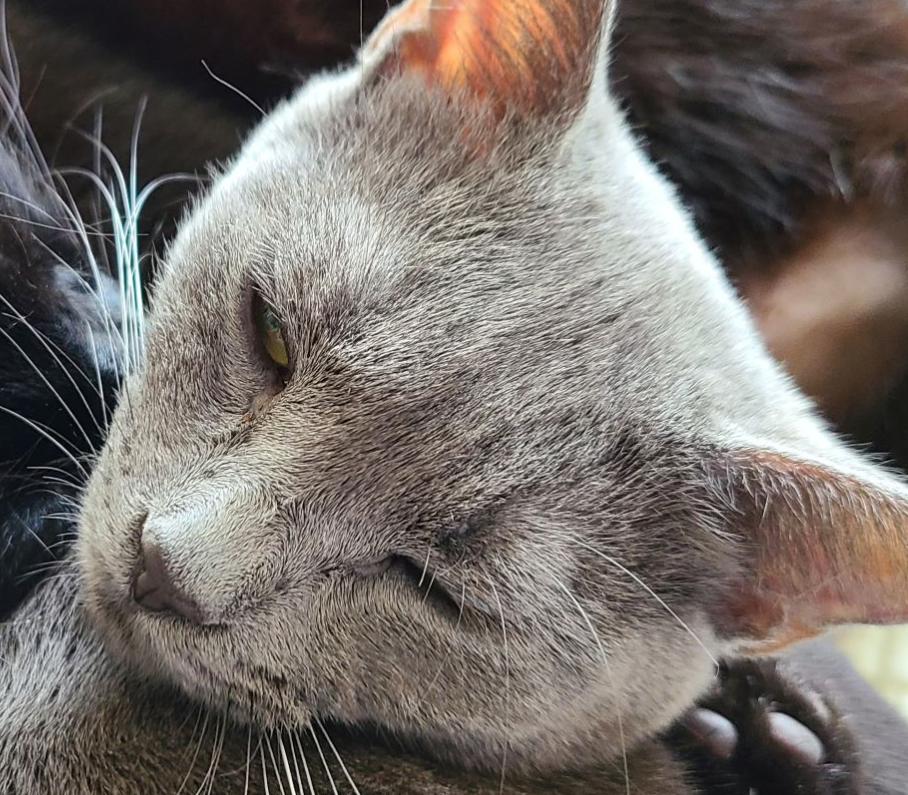real-esrgan-v2
Maintainer: juergengunz

485

| Property | Value |
|---|---|
| Run this model | Run on Replicate |
| API spec | View on Replicate |
| Github link | No Github link provided |
| Paper link | No paper link provided |
Create account to get full access
Model overview
The real-esrgan-v2 model is an AI-powered image upscaling tool created by maintainer juergengunz. It builds upon the popular Real-ESRGAN model, which is known for its ability to enhance images with AI-driven face correction. Similar models include real-esrgan by nightmareai, ultimate-portrait-upscale by juergengunz, and real-esrgan by lucataco.
Model inputs and outputs
The real-esrgan-v2 model takes an image as input and provides an upscaled and enhanced version of that image as output. Users can control various parameters like the scale factor and whether to enhance the eyes, face, or mouth.
Inputs
- image: The input image to be upscaled
- scale: The factor to scale the image by, up to 2x
- enhance_eyes: Whether to enhance the eyes in the image
- face_enhance: Whether to enhance the face in the image
- enhance_mouth: Whether to enhance the mouth in the image
Outputs
- Output: The upscaled and enhanced output image
Capabilities
The real-esrgan-v2 model is capable of significantly improving the quality and detail of images through its powerful upscaling and enhancement capabilities. It can produce visually stunning results, especially for portraits and other images with prominent facial features.
What can I use it for?
The real-esrgan-v2 model can be useful for a variety of applications, such as enhancing low-resolution images for use in marketing materials, creating high-quality images for social media, or improving the visual quality of images used in presentations or publications. Businesses could potentially use it to improve the visual impact of their digital content. Photographers and digital artists may also find it helpful for enhancing their work.
Things to try
One interesting aspect of the real-esrgan-v2 model is its ability to selectively enhance specific facial features like the eyes and mouth. This could be useful for creating more dramatic or striking portraits, or for emphasizing particular aspects of a subject's appearance. Experimenting with the different enhancement options could lead to some unique and creative results.
This summary was produced with help from an AI and may contain inaccuracies - check out the links to read the original source documents!
Related Models

ultimate-portrait-upscale

31
ultimate-portrait-upscale is a powerful AI model developed by juergengunz that specializes in upscaling and enhancing portrait images. This model builds upon similar tools like high-resolution-controlnet-tile, real-esrgan, gfpgan, and controlnet-tile, offering advanced features for creating stunning, photorealistic portrait upscales. Model inputs and outputs ultimate-portrait-upscale takes in a portrait image and various configuration parameters to fine-tune the upscaling process. It then generates a high-quality, upscaled version of the input image. Inputs Image**: The input portrait image Positive Prompt**: A text description to guide the upscaling process towards a desired aesthetic Negative Prompt**: A text description to avoid certain undesirable elements in the output Upscale By**: The factor by which to upscale the input image Upscaler**: The specific upscaling method to use Seed**: A random seed value to ensure reproducibility Steps**: The number of iterative refinement steps to perform Denoise**: The amount of noise reduction to apply Scheduler**: The algorithm used to schedule the sampling process Sampler Name**: The specific sampling algorithm to use Controlnet Strength**: The strength of the ControlNet guidance Use Controlnet Tile**: Whether to use the ControlNet tile feature Outputs Upscaled Portrait Image**: The high-quality, upscaled version of the input portrait Capabilities ultimate-portrait-upscale is capable of generating stunning, photorealistic upscales of portrait images. It leverages advanced techniques like ControlNet guidance and tile-based processing to maintain sharp details and natural-looking textures, even when significantly increasing the resolution. What can I use it for? This model is a great tool for enhancing portrait photography, creating high-quality assets for design or advertising, and improving the visual quality of AI-generated portraits. It can be particularly useful for businesses or individuals who need to produce professional-grade portrait images for their products, marketing materials, or other applications. Things to try Experiment with different combinations of prompts, upscaling factors, and ControlNet settings to achieve unique and creative results. You can also try applying additional post-processing techniques, such as face correction or style transfer, to further refine the upscaled portraits.
Updated Invalid Date

real-esrgan

53.2K
real-esrgan is a practical image restoration model developed by researchers at the Tencent ARC Lab and Shenzhen Institutes of Advanced Technology. It aims to tackle real-world blind super-resolution, going beyond simply enhancing image quality. Compared to similar models like absolutereality-v1.8.1, instant-id, clarity-upscaler, and reliberate-v3, real-esrgan is specifically focused on restoring real-world images and videos, including those with face regions. Model inputs and outputs real-esrgan takes an input image and outputs an upscaled and enhanced version of that image. The model can handle a variety of input types, including regular images, images with alpha channels, and even grayscale images. The output is a high-quality, visually appealing image that retains important details and features. Inputs Image**: The input image to be upscaled and enhanced. Scale**: The desired scale factor for upscaling the input image, typically between 2x and 4x. Face Enhance**: An optional flag to enable face enhancement using the GFPGAN model. Outputs Output Image**: The restored and upscaled version of the input image. Capabilities real-esrgan is capable of performing high-quality image upscaling and restoration, even on challenging real-world images. It can handle a variety of input types and produces visually appealing results that maintain important details and features. The model can also be used to enhance facial regions in images, thanks to its integration with the GFPGAN model. What can I use it for? real-esrgan can be useful for a variety of applications, such as: Photo Restoration**: Upscale and enhance low-quality or blurry photos to create high-resolution, visually appealing images. Video Enhancement**: Apply real-esrgan to individual frames of a video to improve the overall visual quality and clarity. Anime and Manga Upscaling**: The RealESRGAN_x4plus_anime_6B model is specifically optimized for anime and manga images, producing excellent results. Things to try Some interesting things to try with real-esrgan include: Experiment with different scale factors to find the optimal balance between quality and performance. Combine real-esrgan with other image processing techniques, such as denoising or color correction, to achieve even better results. Explore the model's capabilities on a wide range of input images, from natural photographs to detailed illustrations and paintings. Try the RealESRGAN_x4plus_anime_6B model for enhancing anime and manga-style images, and compare the results to other upscaling solutions.
Updated Invalid Date

real-esrgan

28
The real-esrgan model is a powerful AI-based image upscaling and enhancement tool developed by Replicate user lucataco. It is an implementation of the Real-ESRGAN model, which aims to restore high-quality images from low-resolution inputs. This model offers optional face enhancement capabilities and allows for adjustable upscaling, making it a versatile choice for a variety of image processing tasks. Similar models include the real-esrgan-video for video upscaling, the real-esrgan model by nightmareai, and the realvisxl-v1-img2img model for image-to-image translation. Model inputs and outputs The real-esrgan model takes an input image and allows for two additional parameters: the scale factor for upscaling and a boolean flag for face enhancement. The output is a high-quality, upscaled version of the input image. Inputs Image**: The input image to be upscaled and enhanced. Scale**: The factor by which to scale the image, with a default of 4 and a range of 0 to 10. Face Enhance**: A boolean flag to enable or disable face enhancement on the output image. Outputs Output**: The upscaled and enhanced version of the input image. Capabilities The real-esrgan model is capable of producing high-quality, visually appealing upscaled images with optional face enhancement. It can effectively restore details and sharpness to low-resolution inputs, making it a valuable tool for tasks such as image restoration, photo editing, and digital art creation. What can I use it for? The real-esrgan model can be used in a variety of applications where high-quality image upscaling and enhancement are required. This includes professional photography, graphic design, video production, and even personal photo editing. By leveraging the power of this model, users can transform low-resolution images into high-resolution masterpieces, opening up new creative possibilities and improving the visual quality of their work. Things to try One interesting aspect of the real-esrgan model is its ability to handle large input images. By adjusting the scale parameter, users can upscale images to even greater resolutions, potentially unlocking new use cases in fields like medical imaging, satellite imagery, and architectural visualization. Additionally, the face enhancement feature can be a valuable tool for portrait photographers or anyone interested in improving the appearance of faces in their images.
Updated Invalid Date

esrgan

75
The esrgan model is an image super-resolution model that can upscale low-resolution images by 4x. It was developed by researchers at Tencent and the Chinese Academy of Sciences, and is an enhancement of the SRGAN model. The esrgan model uses a deeper neural network architecture called Residual-in-Residual Dense Blocks (RRDB) without batch normalization layers, which helps it achieve superior performance compared to previous models like SRGAN. It also employs the Relativistic average GAN loss function and improved perceptual loss to further boost image quality. The esrgan model can be seen as a more advanced version of the Real-ESRGAN model, which is a practical algorithm for real-world image restoration that can also remove JPEG compression artifacts. The Real-ESRGAN model extends the original esrgan with additional features and improvements. Model inputs and outputs Inputs Image**: A low-resolution input image that the model will upscale by 4x. Outputs Image**: The output of the model is a high-resolution image that is 4 times the size of the input. Capabilities The esrgan model can effectively upscale low-resolution images while preserving important details and textures. It outperforms previous state-of-the-art super-resolution models on standard benchmarks like Set5, Set14, and BSD100 in terms of both PSNR and perceptual quality. The model is particularly adept at handling complex textures and details that can be challenging for other super-resolution approaches. What can I use it for? The esrgan model can be useful for a variety of applications that require high-quality image upscaling, such as enhancing old photos, improving the resolution of security camera footage, or generating high-res images from low-res inputs for graphic design and media production. Companies could potentially use the esrgan model to improve the visual quality of their products or services, such as by upscaling product images on an ecommerce site or enhancing the resolution of user-generated content. Things to try One interesting aspect of the esrgan model is its network interpolation capability, which allows you to smoothly transition between the high-PSNR and high-perceptual quality versions of the model. By adjusting the interpolation parameter, you can find the right balance between visual fidelity and objective image quality metrics to suit your specific needs. This can be a powerful tool for fine-tuning the model's performance for different use cases.
Updated Invalid Date